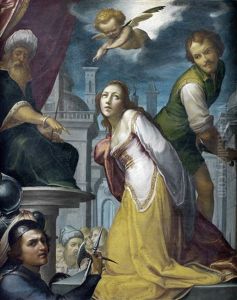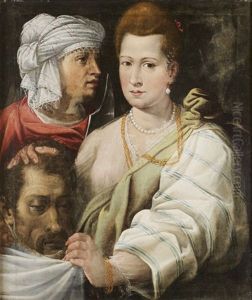Paolo Guidotti Paintings
Paolo Guidotti, also known as Paolo Guido or Paulus Guidottus, was an Italian painter and architect during the late Renaissance period. Born in Lucca, Italy, in 1560, Guidotti was a contemporary of the greats like Caravaggio and Annibale Carracci, although he did not achieve the same level of fame as some of his peers.
Guidotti initially trained in his hometown of Lucca under the guidance of a lesser-known artist, Giovanni Battista Bertucci. He then moved to Rome, which was the center of the artistic world at that time, to further his studies. In Rome, he had the opportunity to be influenced by the works of Raphael and Michelangelo, as well as by the burgeoning Baroque style that was beginning to take shape during this period.
Guidotti's work is characterized by a blend of the Mannerist style, which was prevalent in the late 16th century, and the emerging Baroque sensibility. His paintings often featured religious subjects, which was typical of the time, as the Counter-Reformation was in full swing and art was used as a means of religious expression and propaganda.
Despite not being widely known, Guidotti was quite productive. He created numerous altarpieces and frescoes for churches in Rome and other Italian cities. One of his notable works is the fresco cycle in the apse of the Basilica di San Frediano in Lucca, which showcases his ability to create grand religious narratives within architectural spaces.
After spending a significant amount of time in Rome, Guidotti returned to Lucca, where he became a prominent local artist. He continued to work there until his death in 1629. While he may not have left a mark as profound as some of the leading artists of his time, Guidotti's work remains a part of the rich tapestry of Italian Renaissance art, providing insight into the transitional period between the Mannerist and Baroque styles.

